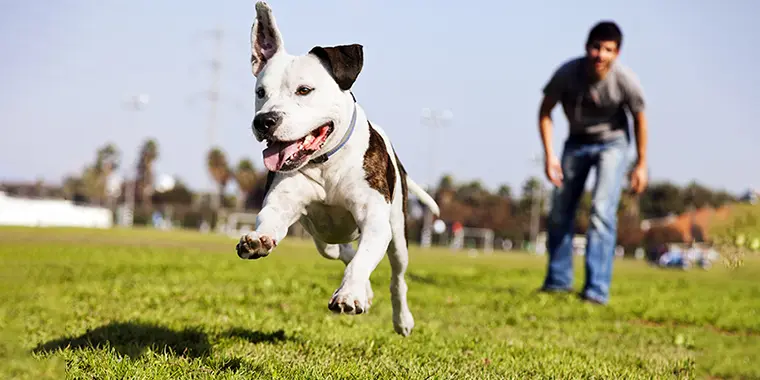Training your dog is one of the most rewarding experiences, but it’s also one of the most common challenges for pet owners. Every dog is different, so the time it takes to train a dog can vary depending on factors such as age, breed, personality, and the type of training being taught. While some dogs may learn quickly, others might require more time and patience. In this post, we’ll explore the key factors that affect the duration of dog training and provide a general timeline to help you set realistic expectations.

Factors That Influence Dog Training Duration
Several factors affect how long it will take to train your dog. Understanding these can help you adjust your approach and expectations for the training process.
1. Age: Puppies generally learn faster than adult dogs. Their brains are more adaptable, and they’re often more eager to please. Basic commands like “sit,” “stay,” and “come” can be taught to puppies as early as 8 weeks old. On the other hand, adult dogs may take longer to learn new behaviors, especially if they’ve developed bad habits over time.
2. Breed: Different breeds have varying levels of intelligence and trainability. For example, breeds like Border Collies, Poodles, and German Shepherds are known for their intelligence and are generally easier to train. However, breeds like stubborn Bulldogs or independent Basenjis may require more patience and consistency.
3. Consistency and Training Methods: Consistent training is key to success. Dogs thrive when they understand what’s expected of them. If training is inconsistent, it will take longer for your dog to learn. Additionally, the training methods you use matter. Positive reinforcement, such as treats and praise, is often more effective than punishment-based techniques. The more positive and consistent your approach, the quicker your dog will learn.
Basic Commands Training Timeline
Training your dog to follow basic commands is often the first step. Here’s a rough timeline for teaching common commands:
1. Sit: This is usually one of the easiest commands to teach and can be learned in just a few sessions, often within 1-3 days. With consistent practice and positive reinforcement, most dogs will learn this command quickly.
2. Stay: Teaching your dog to stay can take a bit longer, typically 1-2 weeks. It’s important to practice this command in various environments and gradually increase the duration and distance. Start with a few seconds in a quiet room and slowly build up to longer periods and distractions.
3. Come: The “come” command can take anywhere from a few days to a few weeks, depending on your dog’s motivation and focus. It’s important to practice in safe, enclosed spaces before trying it outdoors. Using high-value rewards like treats or toys will help reinforce the behavior.
House Training Timeline
House training (potty training) can take anywhere from a few weeks to a few months, depending on your dog’s age, consistency in training, and your dog’s ability to hold its bladder. For puppies, house training can take 4-6 months, while adult dogs may take less time. Consistent scheduling, frequent potty breaks, and positive reinforcement for appropriate bathroom habits are crucial.
1. Puppies: Puppies usually have less control over their bladders and need frequent trips outside, especially after meals, naps, and playtime. With consistent training and supervision, they can typically learn to be house-trained within 4-6 months.
2. Adult Dogs: Adult dogs may take less time to house train, especially if they’ve been previously trained. It may take anywhere from a few weeks to a couple of months, depending on their prior habits and how well you follow a structured routine.
Behavioral Training Timeline
If you’re training your dog to modify specific behaviors, such as leash pulling or excessive barking, it may take longer. Behavior modification typically takes more time because you’re teaching your dog new ways of behaving in situations where they’ve already developed habits.
1. Leash Training: Leash training can take anywhere from a few days to several weeks. Start with short, positive training sessions using a harness or leash, rewarding calm behavior. Gradually increase the duration and distractions as your dog gets the hang of walking calmly by your side.
2. Barking and Other Behavioral Issues: Addressing behavioral issues like excessive barking or jumping on guests may take several weeks to a few months. Patience, consistency, and reinforcing the desired behavior (e.g., sitting quietly when someone arrives) are key. Training may also involve desensitizing your dog to specific triggers.
Advanced Training and Socialization
If you plan on teaching your dog more advanced commands, such as agility training or therapy dog work, expect to invest several months in the training process. These activities require mental stimulation, consistency, and an ongoing commitment.
Socialization is an ongoing process that involves exposing your dog to new people, pets, environments, and situations. Early socialization should start as a puppy and continue throughout your dog’s life. The more well-rounded your dog becomes, the easier advanced training will be.
Conclusion
The time it takes to train your dog depends on many factors, including their age, breed, consistency, and the type of training being taught. Basic commands can often be learned within a few days to weeks, while house training and behavioral issues may take longer. Remember, training is a gradual process that requires patience, consistency, and positive reinforcement. Stay committed, and you’ll see progress over time. With dedication, you can build a strong bond with your dog and enjoy a well-behaved, happy pet.











